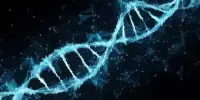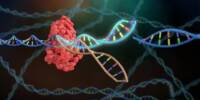Researchers describe a breakthrough approach for identifying pieces of our genetic blueprint derived from ancient genetic parasites, providing new insights into human evolution and health. This method enables scientists to investigate ancient DNA retrieved from fossils, archeological relics, or other sources, providing insight into the distant past.
The human genome, an intricate tapestry of genetic information for life, has revealed a plethora of unusual characteristics. Among these are DNA segments known as “transposable elements” (TEs), which may “jump around” and move within the genome.
TEs, as they change positions within the genome, have the potential to generate mutations and alter the cell’s genetic makeup, but they are also master orchestrators of genome organization and expression. For example, TEs help to build regulatory elements, transcription factor binding sites, and chimeric transcripts, which are genetic sequences formed when segments from two different genes or portions of the genome combine to form a new, hybrid RNA molecule.
Better understanding TEs and their regulators could lead to insights into human diseases, many of which are believed to be influenced by genetic factors. First and foremost, cancer, but also auto-immune and metabolic disorders, and more generally our body’s response to environmental stresses and aging.
Didier Trono
TEs make up half of human DNA, which matches their functional relevance. However, as they migrate and age, TEs develop modifications that obscure their initial shape. Over time, TEs “degenerate” and lose their distinctive characteristics, making it difficult for scientists to identify and trace them in our genetic sequence.
In a new study, researchers in the group of Didier Trono at EPFL have found a way to improve the detection of TEs in the human genome by using reconstructed ancestral genomes from various species, which allowed them to identify previously undetectable degenerate TEs in the human genome. The study is published in Cell Genomics.

The scientists used a database of reconstructed ancestral genomes from different kinds of species, like a genomic “time machine.” By comparing the human genome with the reconstructed ancestral genomes, they could identify TEs in the latter that, over millions of years, have become degenerate (worn out) in humans.
This comparison allowed them to detect (“annotate”) TEs that might have been missed in previous studies that used data only from the human genome.
Using this method, the researchers discovered a greater number of TEs than previously thought, dramatically increasing the proportion of our DNA provided by TEs. Furthermore, scientists were able to demonstrate that these newly discovered TE sequences fulfilled the same regulatory roles as their more recent, previously recognized relatives.
The possible applications are extensive. “Better understanding TEs and their regulators could lead to insights into human diseases, many of which are believed to be influenced by genetic factors,” Didier Trono, a geneticist, adds. “First and foremost, cancer, but also auto-immune and metabolic disorders, and more generally our body’s response to environmental stresses and aging.”















